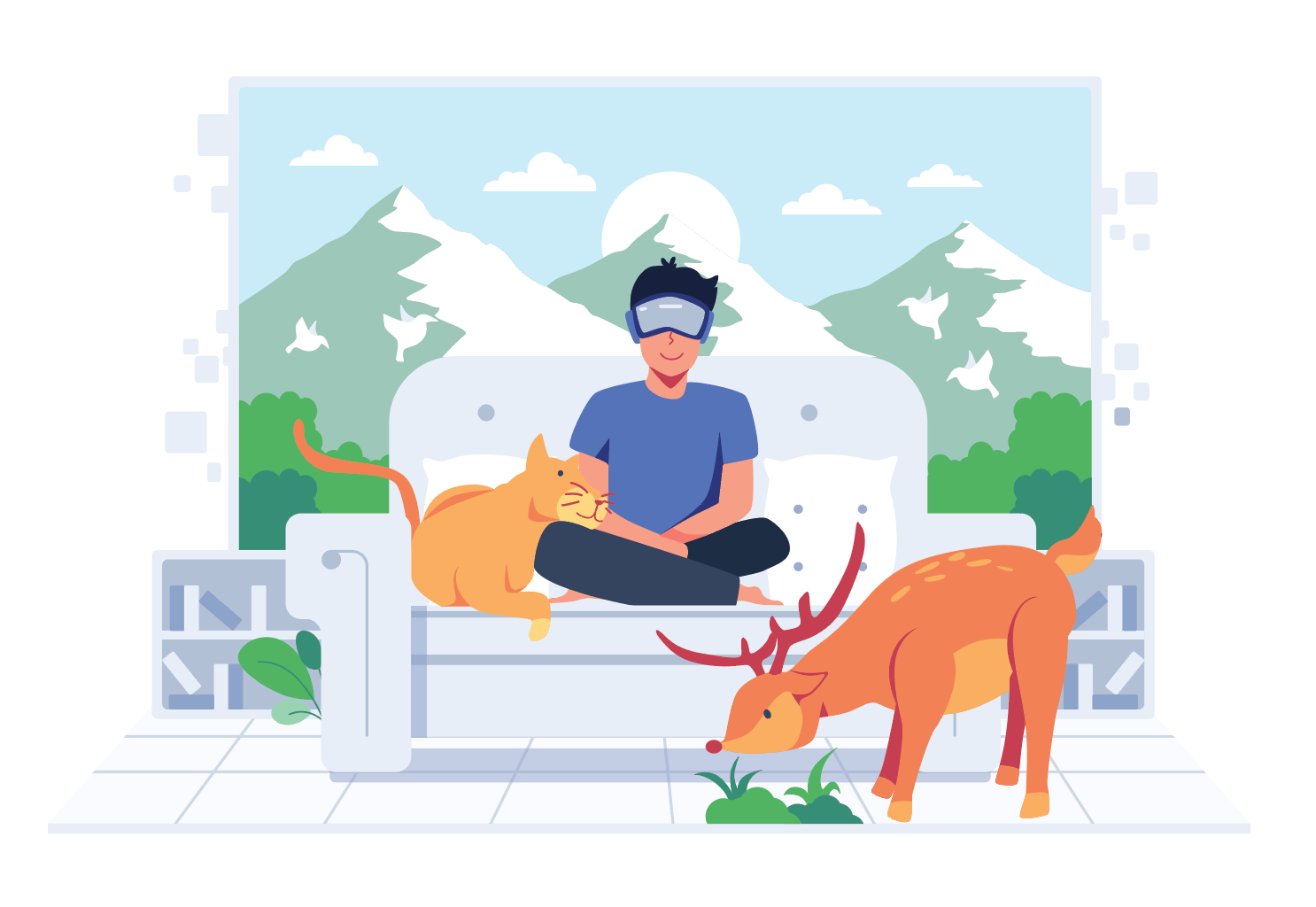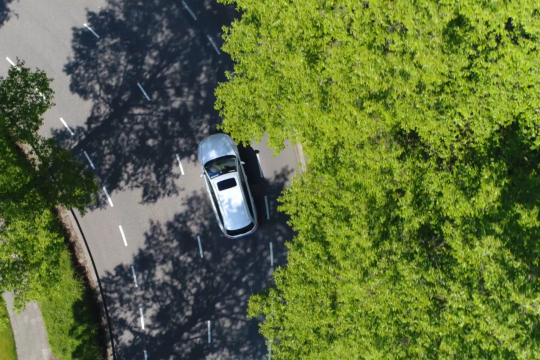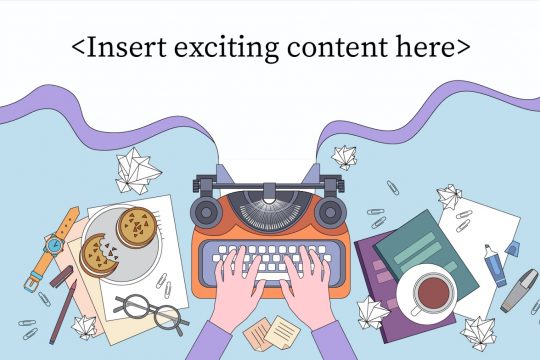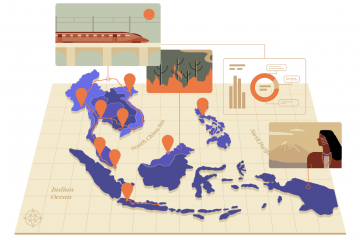Published in The Couch Potato – A weekly column of casual kopi chat over ideas on design, tech, education and all things under the sun. To help the average Potato become a smarter spud.
The advent of AR and VR – and together, extended reality – has created much hype with their novelty initially. Innovators explore the possibilities of using these tools to create interactive experiences for entertainment purposes, such as games and films, which users are the most familiar with.
Beyond entertainment, the versatility of these technologies has the potential to bring about social change. Tech giant Facebook founded VR for Good under their Oculus Rift department to encourage positive change through VR. How have they been able to do so, and how else can we harness these technologies to create social good?
Using AR and VR for social good
AR and VR are the enablers of social change. Many have made headway in using these mediums to push the boundaries of education, healthcare, culture and more.
1. Bridging the gap between communities
Most prejudices against other races, sexualities and marginalised communities are born out of a lack of empathy. These prejudices can take on the form of hate crimes, insinuating violence. How can immersive technology help in humanising our society?
VR creates simulations where participants get the firsthand experience of different situations – literally learning about a whole new world. Participants are challenged to open their eyes up to other people’s experiences.
The Key is a standing interactive theatrical VR experience where participants get the experience of being a refugee. They are transported to four dream-like simulations that showcase the various stages of a refugee’s journey. Posed with difficult decisions in turnkey moments, emotional struggles and dilemmas, they experience the life of a refugee – the turmoil and hardship of building a life in a place where they don’t quite belong.
One participant remarked – ‘the message behind the experience is profound’ and he hopes that ‘this experience can open up someone else’s heart and mind as well’.
By stepping into the life of another, VR can create a greater impact than photos and words. It is a useful medium for breeding empathy and compassion for others, challenging people’s perceptions by forging a common understanding.
2. Creating accessibility
Almost everyone knows of someone with a disability. According to the World Health Organisation, at least 2.2 billion people globally have some sort of vision impairment.
AR and VR have created life changing possibilities for people with visual or hearing disability. Accessibility has never been so within reach for these groups of people who, previously, had immense difficulty in mobility and communication with others.
Through Microsoft’s Project Tokyo, people with visual impairments are able to wear an AR and AI enabled device that can help them make sense of their environment. It detects the location of the user and the distance of those around him, then conveying this information to the user through audio.
With the aim of making conversations easier for people with hearing impairment, two students from Cornell University have developed an AR captioning system. When users wear their specific AR headsets, they are able to see captions (similar to subtitles in a movie) underneath a person’s face when the other party is speaking. The text can even vary in color and size according to the speaker’s intonation.
3. Increasing awareness
Environmental issues are of pressing concern but most of us are removed and detached from the matter as we are unable to see the direct consequences of our actions. For example, it is difficult for us to imagine how using a styrofoam box for lunch today is going to contribute to global warming.
Long term consequences are hard to imagine. Such problems are perfect for VR to come into play. Stanford University’s Virtual Human Interaction Lab has created an immersive VR experience for participants to see the impact that carbon dioxide can have on ocean acidification in the long run.
Google Expeditions bring students on virtual field trips, with choices of up to 900 virtual locations – from the icy Matterhorn mountain to the Arctic Sea. Through AR and VR, students are able to learn about the impact of climate change right before their eyes in these places where they would otherwise not have the opportunity to go to.
Pre-COVID versus COVID
Despite so much potential in transforming lives, these technologies have, frustratingly, not been adopted for mainstream uses since their initial excitement. Why is that so?
AR and VR were first introduced as gimmicky add-ons – enhancements to traditional ways of consuming content. Broad scale applications were a challenge to creators who could not find ways to integrate these technologies into consumers’ everyday lives.
For creators, the cost of producing 3D content is still high. Most companies who build on these technologies are tech companies passionate about technological innovation, or huge companies who have the bandwidth to do so, such as Facebook Tech, Unilever and Google.
However as COVID hits, it ushers in a new way of leveraging on these mediums. Virtual experiences have never been more important. All eyes are on alternatives to old ways of operations and entertainment. The spotlight is shifting, deservedly, and we are seeing more people embracing them now.
During COVID, VR can help to simulate a tranquil environment for those who are suffering from mental health issues due to stress from the pandemic and lockdown. Businesses such as IKEA are also using virtual reality showrooms for customers to mirror the physical experience of shopping for products at their retail store. Social distancing has shifted our gears to make use of AR and VR to stay connected with consumers.
The future of AR and VR
With COVID bringing more attention to AR and VR, people are able to see tangible benefits of these technologies in their day to day lives.
There are more incentives to look for ways to reduce the cost of immersive technologies so that more people are able to enjoy their benefits. And with that, the potential to create social good using AR and VR has such a long way to go in transforming our lives like never before.
VastPotato, a company under Potato Productions, works with a wide range of 3D technologies, including AR and VR, and is always interested in exploring exciting new projects from R&D to production. Get in touch if you’d like to have a chat!
If you like our content, please reach out to us at stories@potatoproductions.com. We’re looking for content partners and we’re excited to get more eyes on interesting articles!






